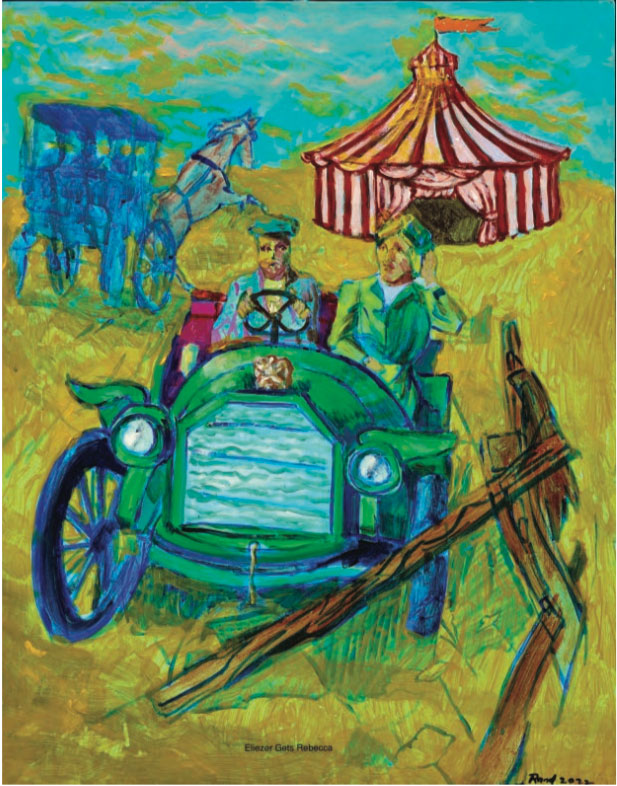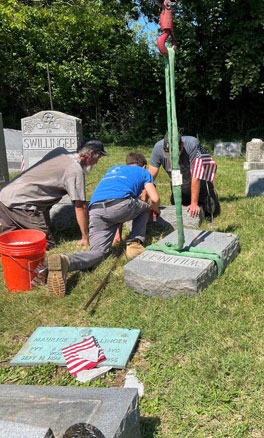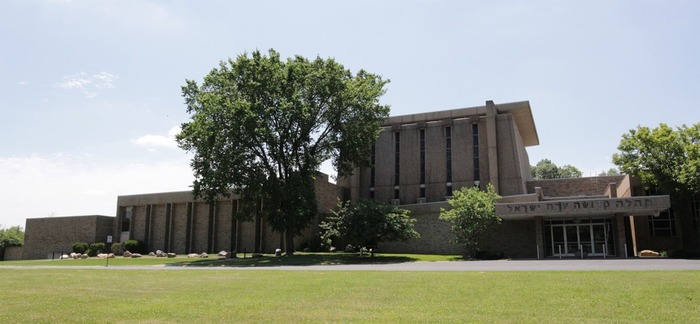“Eliezer Gets Rebecca”
Acrylic on canvas, 28” by 22”
Archie Rand, 2022
By Julia Olson
Assistant Editor
Archie Rand’s “The Seventeen: Iron Flock” exhibit opened at the Cincinnati Skirball Museum on the Hebrew Union College campus on Thursday, March 27. Samantha Baskind, Distinguished Professor of Art History at Cleveland State University, describes Rand’s newest work as “a multi-canvas mural depicting seventeen biblical women that encourages conversation about the diverse roles women play in Jewish history and religion.” According to the gallery catalogue, Rand describes his work as “a grouping of Jewish heroes who are women, appearing in an underreported story that should have a painted monument sampling the collective.”
Rand serves as the Presidential Professor of Art at Brooklyn College. He originally created the 17 pieces currently on display at the Skirball for the sixth Jerusalem Biennale in Spring 2024. Rand’s goal, according to Baskind’s comments in the gallery catalogue, was to show the women in “intriguing new ways amid a kaleidoscope of imagery derived from myriad sources. These include comics and pulp magazines, children’s book illustrations, and classic American and Italian films, among other unlikely visual precedents.”
Unlike Rand’s previous works which are often accompanied by explanatory texts, “The Seventeen: Iron Flock” challenges the viewer to find for themselves the meaning of the work. “Rand intends for viewers to be pulled into the loosely painted canvases on their own terms. The only textual allusion is a tiny label nearly hidden within each canvas, which nods to the subject matter and provides the title of each painting,” Baskind writes.
The exhibit features paintings such as “Even Talks to Animals,” in which Eve, seated in a plush 19th century room, stops her housework to chat with a cat, a giraffe and a monkey on a tricycle. Baskind writes “A riff on those found in children’s books, these talking animals redeem Eve’s taint at succumbing to the serpent’s cunning deception.” The collection features women of the Hebrew Bible who are often overlooked, such as Bilhah, Rachel’s handmaid who gave birth to Dan and Naphtali. In Rand’s interpretation, Bilhah sits by Jacob’s bedside as he is dying, assuming the position that would have been taken by Rachel had she not died in childbirth. Rand sets the scene in a “rural cabin,” writes Baskind, which features a ladder in the background. “That ladder serves a dual purpose: A means to climb into the cabin’s loft and to assist Jacob’s ascent to heaven,” adds Baskind.
Rand includes in his exhibit stories not only from the Hebrew Bible but also from Midrash and the Apocrypha. The stories of lesser known women, such as Joseph’s wife Asenath, are meant “to be viewed in concert with the readily recognizable” women like Deborah and Hannah.
Rand also plays with size and perspective in his work in order to highlight critical parts of the stories. In his depiction of the famous scene between Yael and Sisera, a large hammer features prominently in the foreground. In his rendition of the Judith story, the heroine herself is depicted on a larger scale than Holofernes, illustrating that “her dominance has been inflated to a staggering scale as she looms over her diminutive foe,” writes Baskind.
A Lunch and Learn titled “Curatorial Perspectives on Archie Rand’s ‘The Seventeen: Iron Flock,’” led by Dr. Baskind, will be held Tuesday, May 20 at 1 p.m. Registration information can be found on the Skriball Cincinnati website.
“The Seventeen: Iron Flock” is available for viewing on Tuesdays and Thursdays from 11:00 a.m. – 3:00 p.m. and on Sundays from 1:00 – 4:00 p.m.





